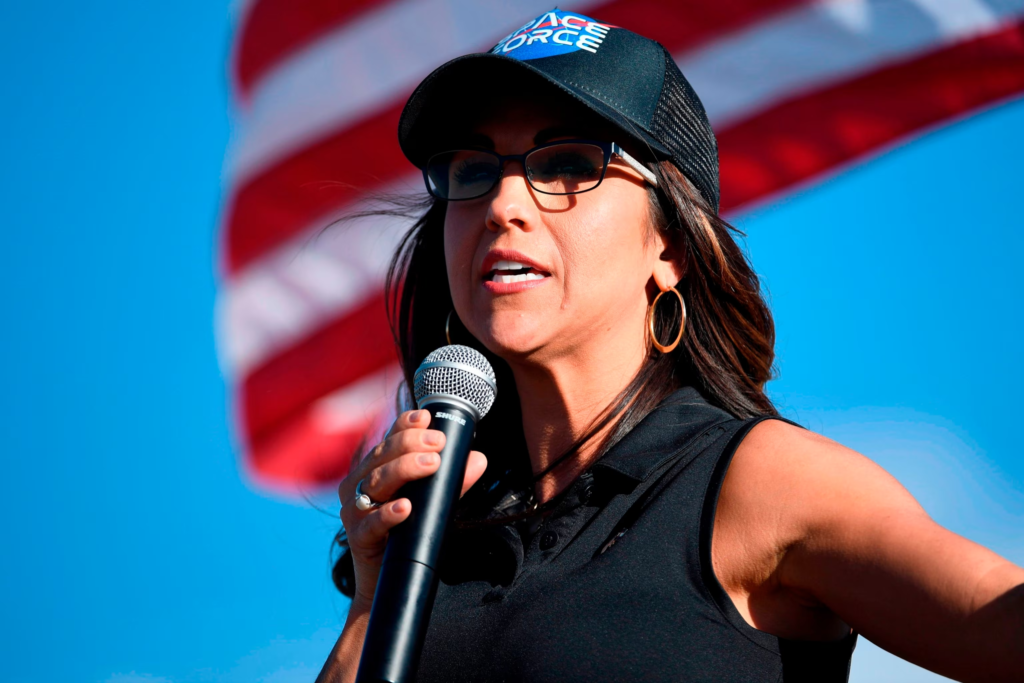In recent years, Lauren Boebert has become one of the most polarizing figures in American politics. As a congresswoman representing Colorado’s 3rd District, she has stirred both admiration and controversy through her outspoken views, staunch support for the Second Amendment, and advocacy for limited government. But beyond her political persona, many people are curious about the physical attributes of this prominent political figure, including Lauren Boebert’s height. While height might seem like a trivial detail compared to the impact of her policies, it plays into her public image in subtle ways, contributing to how she is perceived by both her supporters and detractors.
In this article, we will delve into Lauren Boebert’s height, examining not just the physical measurement but also exploring the ways in which her stature intersects with her political persona and public image. Additionally, we will explore the broader cultural significance of political figures and their appearances, and how aspects like height can influence public perception in the modern media landscape.
Who is Lauren Boebert?
Before we explore the details of Lauren Boebert’s height, it is essential to understand who she is and how she rose to political prominence. Born on December 15, 1986, in Altamonte Springs, Florida, Boebert moved to Colorado with her family as a teenager. She became a business owner and gained attention for her advocacy of gun rights and Second Amendment protections. In 2020, she ran for Congress in Colorado’s 3rd Congressional District and won, defeating incumbent Scott Tipton in the Republican primary.
Boebert quickly became a figurehead for the far-right wing of the Republican Party, gaining widespread media attention for her unapologetic stance on conservative issues. Her political platform often includes strong advocacy for individual freedoms, limited government, and an unyielding defense of the Second Amendment. However, her outspoken views and controversies have sparked significant debate, and she remains a highly divisive figure in American politics.

A Political Firebrand: Boebert’s Influence
Boebert’s rise to national prominence can largely be attributed to her charisma, bold public persona, and her ability to connect with certain voter bases. She has leveraged social media, particularly Twitter and Instagram, to amplify her voice and promote her political agenda. In Congress, she is often seen as a firebrand, taking firm stands on issues like gun rights, fiscal conservatism, and limiting government oversight.
Her role in the 2021 insurrection at the Capitol and subsequent statements have also solidified her place as one of the most contentious and talked-about lawmakers in the U.S. Some view her as a champion of American values, while others consider her to be a threat to democracy. Despite the division, one thing is clear — Lauren Boebert is not a figure who shies away from attention, and she often uses her public image to further her political goals.
Lauren Boebert Height: The Physical Measure
Now, let’s address the question that has piqued the curiosity of many: What is Lauren Boebert’s height?
Lauren Boebert stands at approximately 5 feet 4 inches (163 cm) tall. In the world of politics, this height is neither particularly short nor exceptionally tall, but it places Boebert in the average height category for women in the United States. While her height may not be one of the most defining aspects of her identity, it does play a role in how she is perceived in public appearances, debates, and media coverage.
Height and Public Perception
In a world where image plays an increasingly important role in politics, every physical trait, from attire to posture, contributes to how a public figure is viewed by the media and the public. Although Lauren Boebert’s height doesn’t seem to carry significant weight in comparison to her policies or actions, her stature might affect how she is presented in the media and how she stands in the eyes of her constituents.
Interestingly, studies have shown that height can affect public perception, with taller individuals often perceived as more authoritative and capable of leadership. In politics, this has been especially true for male candidates, who tend to have a height advantage when running for office. While the impact of height on women politicians is less frequently studied, there is some evidence to suggest that shorter female politicians may face challenges related to their perceived level of authority or credibility.
For Lauren Boebert, standing at 5’4”, she may not fit the traditional image of towering, commanding political figures. However, her bold personality and unapologetic approach to her politics have more than compensated for any perceived physical limitations. In fact, many of Boebert’s supporters appreciate her no-nonsense style, and her height, in some ways, might help to position her as more relatable to the average voter.
The Influence of Physical Stature in Politics
The Height Advantage in Politics
Historically, height has played a role in how politicians are perceived in the United States. Some political scientists argue that taller politicians are often seen as more competent, more powerful, and even more trustworthy. In fact, studies have shown that taller presidential candidates tend to have a greater chance of winning elections. The notion that “tallness equals authority” has been ingrained in the collective consciousness, and this perception might influence voter decisions, even if subconsciously.
While this trend is more pronounced among male politicians, Lauren Boebert‘s relatively average height does not necessarily work against her in the same way it might for men. Instead, her impact stems from her aggressive style, charismatic persona, and vocal support for controversial issues like gun rights and personal freedoms, which resonate deeply with her base.
Perception of Shorter Politicians
On the other hand, shorter politicians often find themselves fighting against stereotypes that associate height with authority. While this may be a challenge, it is far from a barrier to success. Lauren Boebert, for example, has successfully cultivated an image of strength and confidence, despite her relatively average stature. By positioning herself as an advocate for her constituency and by projecting a strong personal brand, she has overcome any potential disadvantages related to her height.
Public perception is complex, and many factors, including communication skills, charisma, and policy positions, contribute more to a politician’s success than their physical appearance. Lauren Boebert’s height might be a small piece of the puzzle, but it does not define her in the same way her policy stances or vocal political style do.

Height and Gender Dynamics in Politics
The Gendered Politics of Height
The intersection of gender and height in politics is an interesting one. Female politicians, like Lauren Boebert, may face different expectations than their male counterparts, particularly when it comes to leadership. While height has often been associated with masculinity, women in politics are frequently judged not only for their policies but also for their appearance and perceived stature.
Lauren Boebert, who does not fit the mold of the tall, commanding political figure, challenges these gendered expectations through her actions and rhetoric. Her rise in politics demonstrates that leadership and influence are not determined by physical characteristics like height. Instead, her unapologetic approach to politics, her clear messaging, and her connection with her base have propelled her forward.
It is worth noting that many women in politics, such as Nancy Pelosi, Kamala Harris, and AOC (Alexandria Ocasio-Cortez), have challenged these traditional ideas of physical stature and authority. Lauren Boebert, in a similar vein, is a reminder that politics is more about ideas, determination, and public appeal than the height of the person delivering the message.
The Public Image of Lauren Boebert
How Lauren Boebert’s Physical Presence Complements Her Political Image
In the case of Lauren Boebert, her physical presence is intertwined with her overall political persona. While her height might not be a focal point, the way she carries herself — confidently, unapologetically, and with a strong sense of self — resonates deeply with her supporters. She has mastered the art of turning her image into an asset, regardless of physical measurements.
Boebert’s political style is often loud and assertive, mirroring her public image of being a strong, independent leader. She often showcases her Second Amendment advocacy with her iconic photos of carrying a gun, reinforcing her persona as a staunch defender of American values. Her height, while average, is almost irrelevant compared to the overwhelming presence she exudes through her statements and actions.
Conclusion: Height as a Symbol, Not a Limitation
In the end, Lauren Boebert’s height—standing at 5’4″—does not define her role as a politician or public figure. While height may influence the way politicians are perceived, it is only one small facet of a larger persona. Lauren Boebert‘s rise to political prominence is due to her strong, bold views and her ability to connect with voters who share her ideology, rather than any physical attribute.
Her height might be something that curious observers note, but it’s her character, actions, and words that have made her an influential voice in American politics. Whether tall or short, the impact of a politician is ultimately determined by their ability to inspire, influence, and shape the conversation — and Lauren Boebert has certainly done that, with or without towering over the crowd.




